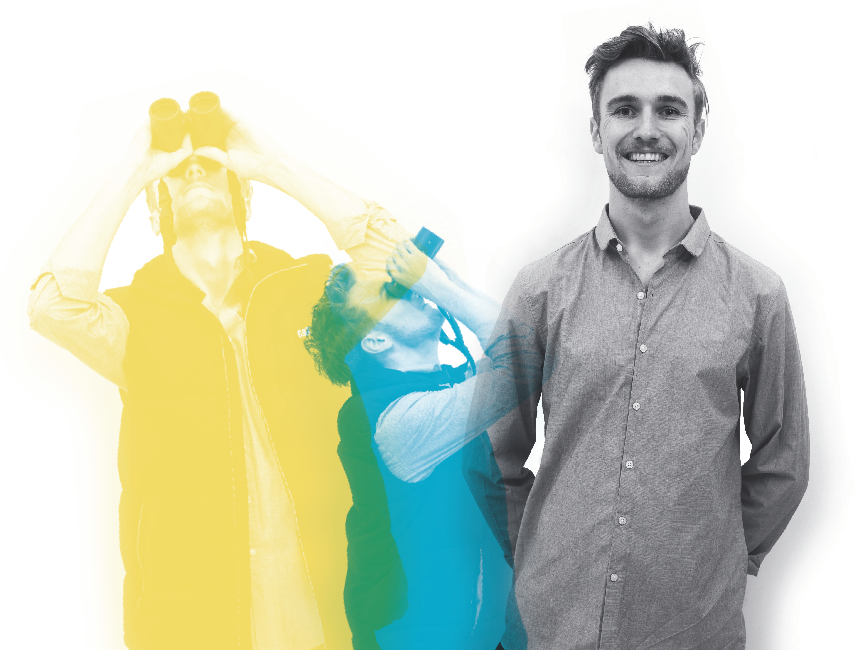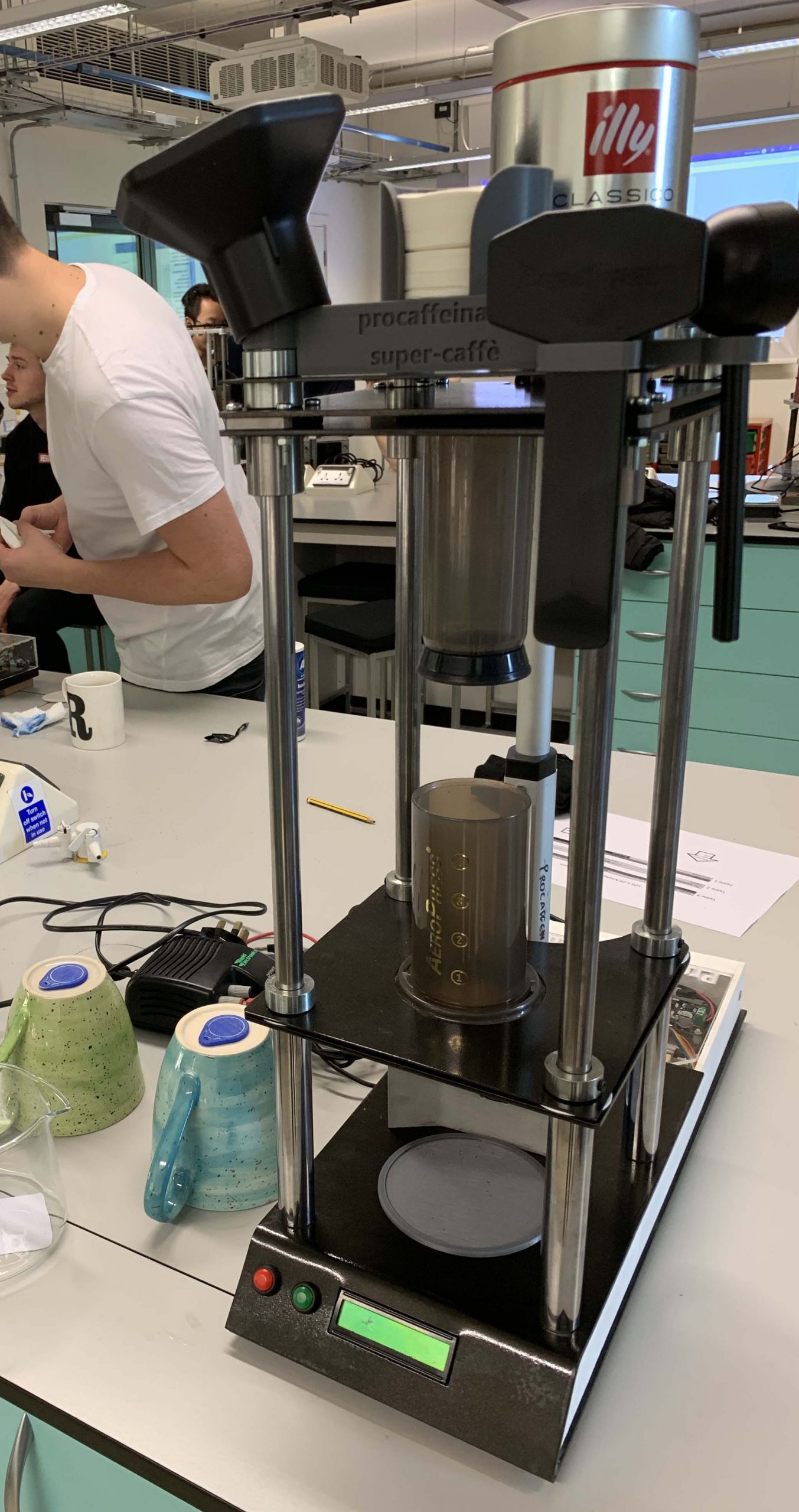
Final year project
Non chemical treatment of mildew mould in UK vineyards [Read more]

Aeropress coffee machine
This team project brief was to take an Aeropress coffee maker and automate it to minimise human input. Our design featured an RFID tag in the bottom of the "smart mugs" which was read by the coffee machine upon placement and facilitated the brewing of a customised cup of coffee as per the user's preferences of water quantity, coffee quantity and brew time. The temperature sensor also allowed the coffee machine to alert the user when the mug was at their desired temperature.


The electronics featured a PIC chip and Arduino Micro that communicated using UART. It also had a motor controller that was used to drive the linear actuator that pressed the coffee. The PIC was programmed using C language and acted as the master controlling all the operations. The Arduino was used to talk to the temperature sensor and RFID reader because Arduino libraries already existed to parse the sensors raw data, making it the more logical option.

Research
The brief was set after a talk by Panasonic and was simply to "reduce waste".
I chose food waste, focusing on fresh produce form my own experience of veg going soft and mushy from being stuffed to the back of a full fridge, a common student experience I found from first hand research.
The research page hi-lighted important second hand research and followed my journey to Curry's and Lakeland to investigate what was on the market and speak to staff who had experience in the kitchen products sector. It resulted in being able to identify trends in the refrigeration market and reasons existing solutions weren't being bought by customers.

Prototyping
This board shows the functional prototype that was developed and the user journey. The concept integrates produce bags (already available at supermarkets) that users can hang on draw sliders in the fridge. This increases storage space, increases ventilation (key to increasing shelf life) and allows users to easily access produce at the back of the fridge without having to get everything in front of it out.

Proposal
The mesh pockets on top hold reusable dehumidifier beads, solving a key pain point identified though first interviews with students. They also contain a ethylene absorbing disk that neutralises gas from produce that is going off. This gas triggers other produce to go off making all the produce in the fridge go off faster. The product focuses on incorporating Sainsbury's produce bags and fits with their packaging sustainability targets.

Final year design project
A early prototype of my FYDP which is a autonomous rover designed to navigate a vineyard and treat crops for Mildew mould. A disease that has a massive impact on crop yield.
Matt Fitzgerald
Function and User Experience are my core.
Functionality and User Experience are what drive my design process. My strengths lie in first-hand research that leads to evidence based insight. This allows me to create solutions centred around a thorough understanding of my customers needs.
I find the most value in creating interactive prototypes to test ideas with users. My experience has taught me that no amount of 3D computer modelling or design thinking in the office can account for the real world.
My career aim is to do design that has tangible results, allowing me to not only sketch, computer model and render but also to make and test physical solutions.
Final year project
Non chemical treatment of mildew mould in UK vineyards
Experience
I was lucky enough to be involved in all aspects of a project from initial meetings and proposals to sales, design, manufacture, testing and delivery. It was by no means easy but I ended up getting to be project leader on two projects and developed my business and design skills massively as a result.
Placements
July 2018 - August 2019
Automation Designer, Labman Automation